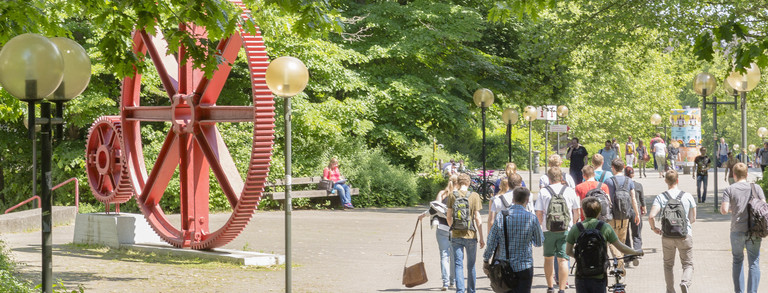Simulation, manufacturing and experimental investigation of surface structures to reduce clearance mass flow rates in rarefied gases
Content
Project description - Contact person - Cooperation / Funding
Project description
In the course of this project, surface structures will be studied specifically in order to influence the scattering direction of molecules in rarefied gas flows. This can, for example, reduce clearance flows, which improves the operating behaviour of vacuum pumps without endangering operational safety. For this purpose, the focus of the investigation is on the one hand the preparation of such surface structures in the micro meter range and on the other hand the experimental and theoretical investigation of the rarefied gas flows with the influence of these surface structures. Based on theoretical preliminary investigations, initial structures are to be manufactured, which will then be used in a vacuum test rig of the Chair of Fluidics, so that the influence of the surface properties on the clearance mass flow rate can be determined. Furthermore, a new wall reflection model for the DSMC method will be developed, which will allow to represent the geometry of the manufactured surface in simulations. For this purpose, the surface geometry is analysed, abstracted and geometrically stored in the wall reflection model of the DSMC method. The wall reflection is based in a subroutine on the test particle method with which the scattering direction of the molecule in the surface structure is determined.
In order to ensure a targeted and reproducible preparation of the surfaces, tools with geometrically defined cutting edges are developed and manufactured at the Institute of Machining Technology, with the help of which the desired surface can be produced. The preparations are carried out on a special machine for chip formation analysis, which works according to the principle of planning. Prior to tool grinding, a finite element chip formation model is developed and the preparation of the target surface with varying tool micro-shapes is investigated. The technological focus is on the prevention or targeted adjustment of burr formation, which was identified as a challenge in simulative preliminary investigations, in particular due to the small chip cross sections. In addition, the simulation will be used to design the tool shape with the aim of minimizing passive forces so that the desired surface structure can be manufactured as accurately as possible. After the developed tools are manufactured by grinding in the in-house laboratory, they will be used to prepare the surface structure. Based on microscopic digitization of the generated structures and modelling in the fluid model, an iterative adaptation of the tools to optimize the resulting surfaces will be performed. Experimental and simulative investigation of the fabricated surfaces will demonstrate the feasible potential of surface structures in rarefied gas flows.
Contact person
Cooperation / Funding
This project is funded by the Deutsche Forschungsgemeinschaft (DFG, German Research Foundation, Projektnummer 513663608) and is carried out in cooperation with the Institute of Machining Technology (ISF) of the TU Dortmund University.


